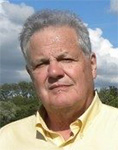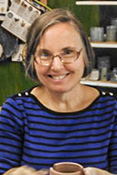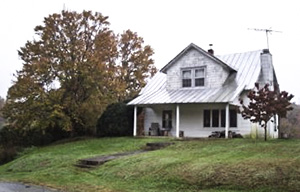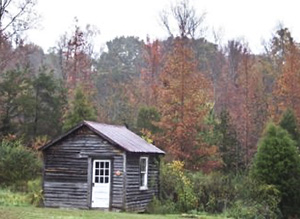A Writer Writes: Letter from Pamplin by Mark Jacobs (Paraguay)

Mark Jacobs
It’s a fact of Peace Corps life that a volunteer must learn to get by in a world not his own, not her own. It’s never a perfect adjustment, not a completely comfortable fit. Often you make mistakes, some of which can be serious. Others are hilarious. (Once, at the dinner table with our training family in Asunción, as we were learning Spanish, my wife, Anne, commented that she had been taking notes in her diarrhea, which completely cracked people up and may still rank near the top in their hall of conversational fame.)
In our case, our Peace Corps experience of feeling our way, doing our best to understand what was going on, turned out to be good practice for the foreign service, which we joined a few years after returning from Paraguay. Our Peace Corps country was nothing like Bolivia, or Honduras, or Spain, despite the common denominator of the Spanish language. Turkey was unlike any of them. Ankara, where we served first, was not like Izmir, where we served later. “Infidel Izmir” was how Anatolian Turks labeled the city on the Aegean, which had a cosmpolitan, polyglot past going back centuries. In each of those places we made mistakes, accommodations, and good-faith efforts to become a part of the societies in which we were living, not just appendages of an embassy.
Moving to the country five miles outside a town of 200 in rural south-central Virginia was yet another shock to the cultural system. I had read, in The Hudson Review, a “Letter from Florence,” and a “Letter from Karachi,” as well as letters from many other places. Our adopted hometown did not stack up to any of them in size or importance, but the editors agreed to look at my “Letter from Pamplin.” Writing it made me aware of the condition of “proximate separateness” in which we have lived much of our adult lives.
Mark Jacobs (Paraguay 1978-80)
•
Letter from Pamplin
The Hudson Review LXXIII
Up Rosser Mill Road, half a mile from our driveway, a busy Amish dairy farm sprawls on both sides of the road. On one side, an old white farmhouse, barns and silos, a profusion of buggies, implements and tools, a kitchen garden bordered by a row of flowers. On the other side, a big field of corn raised to feed the cattle, and pasture land. Because the cows and the draught horses and the equipment they pull come and go, there is usually a residue of mud on the asphalt road.
Mostly what you see, going past the farm, is people working, including the kids. Even the younger boys know how to handle a team of horses to get a job done. Sometimes the kids, boys and girls together, play in the yard. There are plenty of toys. But whatever they are doing, when you drive by, everybody on the farm stops and waves. This is Prince Edward County, in rural south-central Virginia, and stopping and waving is an ingrained tradition. “Below the James [River] lies Dixie,” wrote Parker Rouse in 1968. It’s still true. This is the South, with the South’s knotted history of race. But when it comes to stopping and waving, skin color is not a factor. Everybody waves to everybody else. Traffic is mostly light on county roads. It’s common to see a pickup truck parked along the berm, the driver talking with a neighbor, an acquaintance, or maybe someone new. Courtesy matters, and unhurried conversation is one way to demonstrate it.
The Amish have been moving into the county over the past several decades, drawn by per-acre land prices that are lower than in some of the northern states from which they migrate. Prince Edward and surrounding counties began putting up warning signs on the highways with an image of a buggy above the words ‘Next 12.3 miles.” More recently the wording has changed. Motorists are now enjoined to be alert for horse-drawn vehicles ‘county wide.’
I often wonder what it’s like for the Amish to move into a place that is so foreign to their experience. To a certain extent, the strength of their own insular culture must cushion the transition. They remind me of the Mennonite farmers my wife Anne and I saw in Asunción when we were Peace Corps volunteers in Paraguay in the late 1970s. The men in overalls and straw hats, the women in sober dark dresses stood out from everybody else on the sidewalks of the capital. They made the Chaco Desert bloom, but they were not of the culture alongside which they resided. That phenomenon of proximate separateness is familiar to us. We spent 18 years in the foreign service, moving from country to country, culture to culture, working first to understand a new place and then, in herky-jerky fashion, to adapt, appreciate, and be a part of it. Still, regardless of how well you understood a place or the extent to which you were accepted by your neighbors, there was never any doubt in anybody’s mind that you were foreign, you were not of the place you lived. You were there on sufferance.

Anne Jacobs
Moving to Prince Edward County reenacted that pattern of proximate separateness. Anne grew up in Michigan and I in New York State. Neither of us knew the South. We moved to what had been the Rosser mill farm in 2005. We thought we had found a weekend getaway to escape the congestion of metropolitan Washington, but a moment arrived – sitting on the porch of the old farmhouse, looking out at the woods, listening to the creek running through them – when we impulsively decided to make Pamplin our home. Since then, we have been watching and wading in, doing our best to understand the life and culture around us. It’s a process with no end. As with our overseas experience, progress is erratic.
Prince Edward County was formed in 1754 and named after a younger brother of King George III. It is one of a contiguous cluster of counties known collectively as Southside in the Piedmont region of Virginia. There are cities, of course, but Southside has been predominantly rural. It is not a prime driver of the engine of the Old Dominion’s impressive growth. In fact two economic mainstays have pretty much gone away in recent decades. Textile factories were once primary employers, but they have been shuttered as companies moved their operations to countries with lower labor costs. Since they left, no comparable source of employment has emerged to replace them.
Like textiles, the cultivation of tobacco used to power the local economy. In 1999, Virginia’s lower house, the General Assembly, created a Tobacco Region Revitalization Commission, which oversaw efforts to compensate growers for their losses due to a decline in their assigned quotas. Across Southside, you still see the occasional field of tobacco growing – the wrinkly, large-leaved plants are unmistakable – but in P.E. County the significant acreage once devoted to tobacco has been reduced to economic irrelevance. The tobacco barn on our property, its high ceiling traversed by round poles of bare wood on which the leaves were hung to dry, is a standing relic.
Our recently deceased neighbor, Will Hamlett, spent the better part of his working life in both tobacco and textiles at the same time. One of the hardest working individuals I ever met, he commuted just under an hour each way to work in a mill, taking all the overtime they offered him. When he got home, he spent what remained of the day planting and growing and harvesting tobacco. He talked, once in a while, about falling into bed exhausted, smiling quietly as he recollected those grueling days. In his later years, the mill was closed, the government eased farmers out of tobacco, and he converted his one-hundred-fifty acre farm to the raising of Angus beef cattle.
It’s relatively easy to understand and appreciate those big economic trends, and how they have affected individual people. It’s much trickier to get a solid sense of the question of race today. In 1951, led by Barbara Johns, black students at a segregated high school in Farmville, the county seat, walked out of class initiating a campaign of protest against overcrowding and substandard conditions. The campaign was led entirely by students. It attracted the interest of renowned civil rights attorneys including Richmond’s Oliver Hill. The Prince Edward case that emerged wound up being folded into the Supreme Court’s 1954 decision, Brown v. Board of Education, which decreed that racial segregation in schools was unconstitutional.
The decision mandating integration did not go over well with the Prince Edward County school board. As elsewhere around the state, it dawdled. It stalled. In 1959, rather than comply, the board voted to defund and close the public schools. This happened in the context of a statewide campaign by whites that came to be known as Massive Resistance. In 1956, Virginia’s General Assembly had passed a series of laws known as the Stanley Plan, intended to codify the resistance to integration, and the social changes integration would bring.
As a result of the closure of P.E. County schools, whites-only private institutions known as academies began opening. A generation of African American students, along with white students whose parents could not afford academy tuition, were out of luck. Not until 1964 did the school board give in and reopen county schools.
There have been attempts to make up for the injustice done to members of what came to be known as P.E. County’s “Lost Generation.” In 2004, the Virginia General Assembly appropriated $1 million to fund the education of students deprived of high school owing to the closure of the schools, a sum matched by a private philanthropist. And the school from which Barbara Johns led the 1951 protest has been converted to a first-rate museum of civil rights. The Robert Russa Moton Museum stands prominently in downtown Farmville. It’s a good reason to visit the city.
The profound changes in race relations that have come to America since the 1960s have been replicated in Prince Edward. Interracial couples are anything but a novelty. Stroll through the Farmville Wal-Mart and you’ll see black fathers and white mothers pushing shopping carts with kids whose skin color takes something of visual value from both parents. In restaurants, white waitresses wait on black patrons with cheery naturalness. At the car dealership, young white service managers address elderly black customers as Sir and Ma’am just as naturally. Local elective offices, including that of sheriff, are frequently filled by African Americans.
Recent social protest around the country has focused on systemic racism, exemplified by the violence done by police against persons of color. The stubborn persistence of racism in America appears to have taken white America by surprise. Well intentioned people thought that having elected Barack Obama twice, we were past that. But I have seen, in my fifteen years in Southside, enough instances of naked racial hatred to understand just how deep the animosity still runs.
In a grocery store in Appomattox, passing by the deli section, I was confronted by a white woman who could barely speak, she was so enraged at a black woman slicing cold cuts, head down behind the counter. As the white woman sputtered it became clear to me that there had been no altercation, she was simply expressing her hatred of the deli employee for being black. She wanted my solidarity, as a white guy, and did not get it.
At a print shop in Farmville, a white customer casually picked up the business card of a black minister from a display counter and expressed his contempt for the man, who was not present. “They’re all reverends, ain’t they?” he sneered to the proprietor and, by extension, me.
When Anne and I were new in Pamplin, people often dropped by to check us out. One couple asked where we had moved from. When I told them we had been living in Northern Virginia — a region that is immigrant-rich and impressively diverse — they said that they had once made a trip to NoVa but that, “We didn’t see many Americans.”

Rosser Farmhouse
How long will the hate go on? The Rosser mill property we bought included a farmhouse made of logs, built in the 1920s. Mr. and Mrs. Rosser, who raised their family in the house, planted tobacco, ran some cattle and hogs, and operated the mill, which served the community by grinding corn for cattle feed. People who were around during their time on the farm recalled that during the tobacco harvest, the Rossers hired both African Americans and whites to do the labor they called “pullin’ baccy.” All morning, people worked side by side in the fields. At noon, when they broke for lunch, the whites ate their meal inside, while the blacks sat separately at a table in the side yard.
The table is long gone from the yard, although I think about it when I cut the grass in the spot where it stood. At the same time, in a substantial way, that separate table remains. We call slavery America’s original sin. The consequences of the violence done to black Americans over many generations includes attitudes. Those attitudes long ago penetrated the marrow of Americans’ bones. Eradicating them will take more than time. The expiation of a sin demands repentance, remorse, and the articulation of regret.
Despite the complexities of the relationship, black and white residents of Prince Edward County share a common tongue. Perhaps because I spent so many years living outside the country, I somehow had the sense that mass media, a high degree of mobility, and the general cultural sloshing that has gone on in the country had combined to homogenize the varieties of American English into one. Now, having lived in Pamplin, I am pleased to admit I was wrong. Southside English has its own vocabulary, its own accent and intonations, its own cadences and figures of speech.
For almost as long as I have lived in Pamplin I have been writing stories set in a fictionalized Southside county. In these “Broadhope” stories I try to replicate the language without descending to caricature. Not easy. Readers and editors sometimes take issue with a sentence of dialogue. They have the sense that it is too much, that I have caricatured the speech of my characters. The expression “might could” has been particularly suspect, as in, “I’m thinkin’ it might could rain.” In fact that is a perfectly normal construction in a Pamplin sentence. I hear it, and many others like it, all the time. “I been knowin’ Willy a long time” may sound like a parody. It’s not. That sentence was spoken to me, verbatim, by a neighbor. “We been havin’ right much hot weather”; “I been fixin’ to come by”; “It’s a house on the corner,” in place of “There’s a house on the corner”: all of these are common.
I feel fortunate to live in a place that still speaks its own original American tongue. The singularity of the language is lightheartedly captured by Cindy Schmidt and Josh Waltman in their 2019 book, Southside Slang. The strength and vigor of the local language persist, although its expression is more pronounced among older people. It took me a couple of years to catch the idiom and be sure I knew what a person was saying. It helped to play in a band all of whose members, except my son and myself, were local.
Another experience shared by whites and blacks — and the Amish, for that matter — is church. As across America, the churches are mostly segregated. For every black Baptist church, a white one exists, frequently nearby. The Amish hold rotating services at the farms of their congregation members. But just about everybody attends. Church is central not just to people’s religion but to their social identity. Bible study groups, potluck dinners, choirs, and visiting musical groups all bring church members together in activities that bind them as a self-selecting community. Now and then, roadside signs pop up announcing a revival. A tent goes up on the edge of town near the baseball field, and for two or three days people are offered the opportunity to renew their faith under spread canvas.
 Life in Pamplin is not much like life in Paraguay, or Turkey, or Spain, or any of the other places Anne and I have lived. Its folkways are not much like those of Western New York or Central Michigan. We were drawn here by a piece of property: the old farmhouse, the tobacco barn, the defunct mill, which still stands with its enormous decayed wheel, its pulleys and gears and grain hopper. We liked walking in the woods, coming on the dam built to make use of the water of Spring Creek, channeling it down a mill race and over a chute to power the wheel. We liked hearing the stories about neighbors once a year joining the Rossers to unplug the hole that fed water from the dam into the mill race. They chopped down a tree, stripped its branches, and shoved the trunk into the hole like a giant toothpick. When the mud and debris that had accumulated gave way, the story goes, a flood of fish were also released, and the neighborhood enjoyed a fish fry.
Life in Pamplin is not much like life in Paraguay, or Turkey, or Spain, or any of the other places Anne and I have lived. Its folkways are not much like those of Western New York or Central Michigan. We were drawn here by a piece of property: the old farmhouse, the tobacco barn, the defunct mill, which still stands with its enormous decayed wheel, its pulleys and gears and grain hopper. We liked walking in the woods, coming on the dam built to make use of the water of Spring Creek, channeling it down a mill race and over a chute to power the wheel. We liked hearing the stories about neighbors once a year joining the Rossers to unplug the hole that fed water from the dam into the mill race. They chopped down a tree, stripped its branches, and shoved the trunk into the hole like a giant toothpick. When the mud and debris that had accumulated gave way, the story goes, a flood of fish were also released, and the neighborhood enjoyed a fish fry.
When we moved here, we did not think overmuch about the cultural differences we would face. Peace Corps and the foreign service, we must have thought, had sufficiently prepped us. Those differences are pronounced enough that we still feel them. If we are not here on sufferance, we nevertheless continue to feel that sense of proximate separation I believe the Amish may feel, wherever they live.
One night a few years ago I went coon hunting with John Adams. John, a neighbor, is a legendary trapper and hunter. Once, when I was out walking on Baker Mountain Road, he pulled his old red pickup to the side of the road to show me the cargo of live foxes and dead coyotes he was hauling in the bed. John also raises coon hounds, and one of them ranged ahead of us the night we went down into our woods following the track of Spring Creek.
Coon hunting had fascinated me since I read Fred Gipson’s Hound Dog Man as a boy. Because I was a city kid, I had no opportunity to come across a character like the novel’s Blackie Scantling, a man on the margin who lived free and knew everything there was to know about the science of coon hunting. I thought of the book as I followed John through the woods.
 There may have been some sort of moon, but what I remember is the dark, and John walking steadily forward as though it were high noon on a day of brilliant sun. Not once did he put his foot down wrong, or fail to know exactly where he was. His knowledge of the woods and the creek was astounding. It came from sixty years of being there, paying attention without having to try.
There may have been some sort of moon, but what I remember is the dark, and John walking steadily forward as though it were high noon on a day of brilliant sun. Not once did he put his foot down wrong, or fail to know exactly where he was. His knowledge of the woods and the creek was astounding. It came from sixty years of being there, paying attention without having to try.
Before long the hound picked up the scent of a raccoon, tore off uphill through the woods, and treed the animal. John and I came up behind the excited, baying dog. I held the flashlight, and John brought the coon down with a single .22 shot. There was something not to be mistaken in the thump the animal made, hitting the soft earth of the forest floor. It had to do with the finality of killing and dying. I had the sense he was pleased to show me what he and his dog could do. It was a successful demonstration, and we headed home.
If I went down into my woods a hundred nights, by moonlight or starlight or no light at all, I would never approach John Adams’ profound knowledge of the place. I do not have John’s eyes. What I have instead is not a consolation; what I have suits me. After a lifetime of moves into and out of cultures not my own, I take satisfaction in being able to imagine what my neighbor sees.
Love the story and also recall fondly your neighbor Will Hamlett. When he heard we were from the north he did not want anything to do with us. After you told him Al had a farm and raised some cattle he was proud to tell him all about racing “Bacca” and his cattle and invited him to sit and have some lemonade. Life in Pamplin is a watercolor of Americana. Your property is stunning and you live the American dream. Hope our paths cross soon my dear friends.
“Proximate separateness”…I guess that’s a curse (or a blessing) that a lot of us who have wandered the world for decades must accept as permanent. Great piece! You and Anne are fortunate to have found such a lovely place to settle. I left my California home last September to spend nine months in northern Virginia helping my grandson attend virtual kindergarten. Glad I’m here, but I can’t wait to go home. I hope you both have managed to get vaccinated. I’m getting my second dose this week! Still writing every day but haven’t published anything after “Farishta” except for solar cooker training manuals and treatises advocating for the use of that simple renewable energy technology in refugee camps. So far old age has been good to me. May it continue.
A great piece, a good reminder of the particularity of life experience. As I think back over the long (and continuing) time spent in New York state, and the shorter (but still significant) times spent in northeast Thailand and in Bishkek, Kyrgyzstan, I realize what a rich experience life can offer, in how people live and speak and eat and interact. Great to have someone share his reflections and insights on this experience.
So well written and timely–with the insights into the ingrained culture of racism one often finds in this country. This piece reminded me of some of Paul Theroux’s stories in “Deep South” where he also gets to know and tell the stories of some of the locals. That Peace Corps experience of “proximate separateness” allows us to see the world around us in an entirely different light.